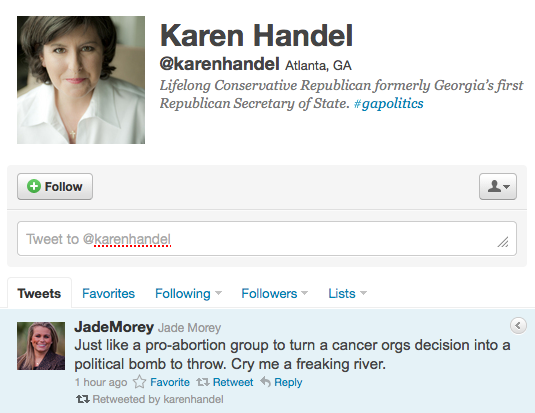Sweeping the Internet this week: a viral video campaign by Invisible Children to make Joseph Kony, a terrorist leader in Uganda, a household name, and thereby get the media and politicans to pay attention. Viewership is through the roof, #KONY2012 is trending on Twitter, and the press is all over it. Even Lord Voldemort is on board:

The video is here; jump to 10:30 on the video if you want to get to the heart of the video, and watch until 27:00, to get a sense of what the campaign is trying to achieve and how it will do so, without having to watch the whole thing – it’s 16 or so minutes of your life worth spending, both to learn about an important human rights campaign and to see how to make a campaign go viral.
This is already a wildly successful activism / digital story-telling campaign – but it’s not a campaign that can be easily replicated by *most* nonprofits.
Here’s why it is working:
- it’s an easy-to-understand cause
- it’s a cause that gets an immediate emotional-response by anyone who watches the video
- it’s a slickly produced video – very well edited, compelling imagery, excellent script
- it offers both simple and ambitious ways to get involved: at the very least, you can like the Invisible Children Facebook page, share the video with your online social network, and help get the word out further. At the other end of the spectrum, you can organize an event on April 20, per Invisible Children’s guidelines for such, garnering press coverage and participation on a local level for an international issue.
- it builds up to a specific day – April 20
- it has a wide range of items for sale for activists to wear and display on April 20, which will help publicize the event and help make participants easy to identify the day of the event, and the sale of those items helps fund the campaign
- there are Invisible Children staff engaging with people on Twitter and Facebook for hours at a time – not just tweeting one link to a press release and hoping it catches on
- it has an easy-to-remember Twitter tag that isn’t in use by anyone else: #KONY2012
It’s having that specific day of action and a video that creates in-depth awareness about a specific issue that, IMO, makes this go well beyond slacktivism/slackervism.
What did it take for this campaign to be successful:
- money. Yes, I’m sure a lot of things were donated and a lot of expertise was give pro bono, but it still took money to pay for people and their time and knowledge to make this happen.
- wide-ranging, deep relationships with key people (media, corporations, celebrities, politicians, communications strategists). These relationships took many months, even years, to cultivate – more than some tweets and email.
- a very detailed, well-thought-out strategic plan. Somewhere, this plan is in writing, no matter how spontaneous the feeling this campaign is conveying.
- a LOT of people to undertake the necessary outreach activities via traditional and online media. This isn’t just sending press releases; this is also engaging with people on Twitter and the phone for hours at a time. It took people to design the web site, to design the materials, to distribute those materials, to talk to the press – and it took those people MANY hours of work to do so, and it’s taking even more time to respond to all of the press and critics now focusing on the effort.
But while there is a lot to learn from this campaign for nonprofits and NGOs, this is not the campaign most should aspire to.
- Most nonprofits and NGOs do NOT have the resources to make something like this happen – and never will.
- Your nonprofit is probably engaged in something that’s only local, or that is a more complex issue to explain, and that doesn’t garner an immediate emotional response.
- Your nonprofit might not be able to survive the incredible attention and scrutiny that a campaign like this would bring.
That doesn’t mean your nonprofit is less worthwhile than Invisible Children – it just means that having a video go viral nationally or internationally might not-at-all be what is best for YOUR nonprofit.
As you read about this campaign and see it get so much attention, think about what you really want from donors, volunteers, the press, politicians, clients and the general public regarding your organization.
Think about local celebrities, local policy makers, local leaders (both official ones, like elected officials, and unofficial ones, like prominent business people or local leaders of religious communities) and local activists – what do you want them to say about your organization, and how might you get them to?
Also see this TechSoup resource on Digital Storytelling.
Another lesson to learn from this campaign: don’t spam celebrities. I’ve seen a lot of celebrity Twitter feeds over-run with tweets from people begging for that person to follow or mention this or that nonprofit or cause. George Clooney probably gets 100 of those tweets in just one day! Don’t make George Clooney dislike your organization because you keep tweeting him, begging for a mention.
One of the things that has been amusing to see is the stampede of smug aid workers and other smugsters to condemn the campaign – the theme of the pushback falls into four categories:
Here’s why a lot of these criticisms are bogus:
Americans are some of the most globally-unaware people on the planet. I moved back to the USA in 2009 and have heard things every day by neighbors, people I volunteer with and people on TV that have reminded me of this every day. And this ignorance about the world leads to some profoundly ridiculous statements and actions by my fellow Americans. Maybe this campaign will help make a few people, particularly young people, aware of the world beyond the borders of the USA. BandAid/LiveAid did that for me once-upon-a-time – don’t laugh, but it did. I was a teenager in Kentucky as ignorant as a box of hammers. That record and that concert set me on a path for a lifetime.
Also, in the USA, no human rights movement has ever succeeded without a lot of outside pressure and support – and anyone who thinks apartheid was removed as an official policy in South Africa only because of pressure and evolution from within South Africa isn’t paying attention.
Some of the arguments I’ve heard about why the USA should not be focused on Uganda are the same arguments I’ve heard from China and Russia about why the world needs to not “interfere” with Syria.
Compassion for one thing breeds compassion for other things. No one – NO ONE – is saying, “Don’t be focused on local issues – instead, care about what’s happening in Uganda!” As this campaign ends, the people that have gotten caught up in it, particularly young people, are going to have a taste for advocacy and wanting to make a difference. If your local nonprofit is jealous, then start thinking now about how you are going to leverage what’s happening. Is there going to be an anti-Kony event at your local schools or in your local community? Then start designing the handbills you are going to give out at anti-Kony-related events to tell those energized young people about your local cause and how and why they can get involved.
By all means, offer legitimate criticisms of this campaign and Invisible Children. But some people are trying to kill this campaign – and I question their motivations in doing so.
Also see:
Use Your Web Site to Show Your Accountability and To Teach Others About the Nonprofit / NGO / Charity Sector
How to Make a Difference Internationally/Globally/in Another Country Without Going Abroad
Ideas for Leadership Volunteering Activities to make a difference locally
Advice for volunteering abroad (volunteering internationally)
 I share a LOT of information on Twitter: info on effective nonprofit communications, management or engagement of volunteers, job leads with leading nonprofit and humanitarian organizations, funding leads, updates on UN initiatives in Afghanistan, Ukraine, or anywhere else I care about (and I care about a LOT of places), and more. Often, it’s information I don’t share anywhere else.
I share a LOT of information on Twitter: info on effective nonprofit communications, management or engagement of volunteers, job leads with leading nonprofit and humanitarian organizations, funding leads, updates on UN initiatives in Afghanistan, Ukraine, or anywhere else I care about (and I care about a LOT of places), and more. Often, it’s information I don’t share anywhere else.














